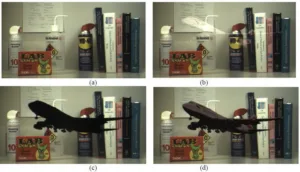Session 58 was a grab-bag of unrelated papers so I guess the title was as good as any the organizers could have chosen.
Paper 58.1, “New Developments in Video Coding towards Immersive Visual Experience,” by Seishi Takamura of NTT Corporation, discussed the history of video coding, starting 90 years ago in 1927. Most of his paper consisted of this historical review. At the end, he discussed the challenges of coding for VR, including 360° VR, but didn’t give any new solutions. I’ve discussed the lack of standards for VR and this paper documents it, at least in terms of video coding.
Paper 58-2, titled “Color Appearance Comparison between Head-mounted Display and Monitor” was presented by Hyosun Kim of UNIST, with co-authors from Samsung. This paper was based on human experiments with university students and found that a HMD looks 10% brighter and 8% more colorful than a LCD monitor in terms of CIECAM02 scales when both displays have the same color characteristics. This may be disturbing news to the content creation industry. Will they need to color-grade content separately for HMDs and TVs? Clearly, this is a study that needs repeating.
Paper 58.3, “Optical Simulation of Light Field Display for Correcting Farsighted Vision,” was by Sung-Min Jung of LG Display. The authors did not make it clear why it was necessary to use such a complex technique, similar to a light field display, to solve a problem that is more easily solved by adding a diopter adjustment to the HMD optics.
Paper 58.4, “Enhancing Note-Taking and Review Processes Using an Interactive Dual-input and Dual-display Interface,” was presented by Sakuichi Ohtsuka of Kagoshima University in Japan. The focus was on education, and how students in the US and Japan no longer take notes in class. He presented studies that show note-taking enhances learning and presented a proposed device that could be used for note taking. Since the device looked remarkably like a tablet or smartphone with scribe input, perhaps the solution to the problem is an app, not a new gadget a student would need to carry around.

